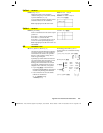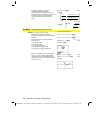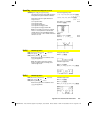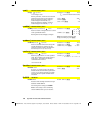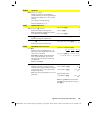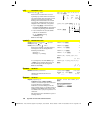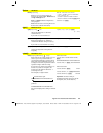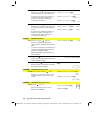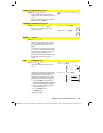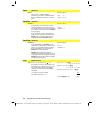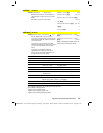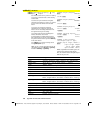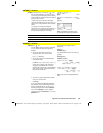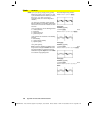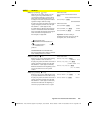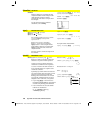
Appendix A: Functions and Instructions 493
8992APPA.DOC TI-89 / TI-92 Plus: Appendix A (US English) Susan Gullord Revised: 02/23/01 1:48 PM Printed: 02/23/01 2:21 PM Page 493 of 132
rowNorm
()
MATH/Matrix/Norms menu
rowNorm(
matrix
)
⇒
expression
Returns the maximum of the sums of the
absolute values of the elements in the rows in
matrix
.
Note: All matrix elements must simplify to
numbers. See also
colNorm()
.
rowNorm([-5,6,-7;3,4,9;9,-9,-7])
¸
25
rowSwap
()
MATH/Matrix/Row ops menu
rowSwap(
matrix1
,
rIndex1
,
rIndex2
)
⇒
matrix
Returns
matrix1
with rows
rIndex1
and
rIndex2
exchanged.
[1,2;3,4;5,6]
!
Mat
¸
1
2
3 4
5 6
rowSwap
(
Mat,
1
,3
)
¸
5 6
3 4
1 2
RplcPic
CATALOG
RplcPic
picVar
[
,
row
][
,
column
]
Clears the Graph screen and places picture
picVar
at pixel coordinates (
row
,
column
). If
you do not want to clear the screen, use
RclPic
.
picVar
must be a picture data type variable.
row
and
column
, if included, specify the pixel
coordinates of the upper left corner of the
picture. Default coordinates are (0, 0).
Note: For less than full-screen pictures, only
the area affected by the new picture is
cleared.
rref()
MATH/Matrix menu
rref(
matrix1
[
,
tol
]
)
⇒
matrix
Returns the reduced row echelon form of
matrix1
.
rref([
ë
2,
ë
2,0,
ë
6;1,
ë
1,9,
ë
9;
ë
5,2,4,
ë
4])
¸
1 0 0 66/71
0 1 0
147
71
0 0 1
ë
62/71
Optionally, any matrix element is treated as
zero if its absolute value is less than
tol
. This
tolerance is used only if the matrix has
floating-point entries and does not contain
any symbolic variables that have not been
assigned a value. Otherwise,
tol
is ignored.
•
If you use
¥¸
or set the mode to
Exact/Approx=APPROXIMATE
, computations
are done using floating-point arithmetic.
•
If
tol
is omitted or not used, the default
tolerance is calculated as:
5
E
ë
14
ù
max(dim(
matrix1
))
ù
rowNorm(
matrix1
)
Note: See also
ref()
.
rref([a,b,x;c,d,y])
¸
1 0
d
ø
x-b
ø
y
a
ø
d-b
ø
c
0 1
ë
(c
ø
x-a
ø
y)
a
ø
d-b
ø
c



